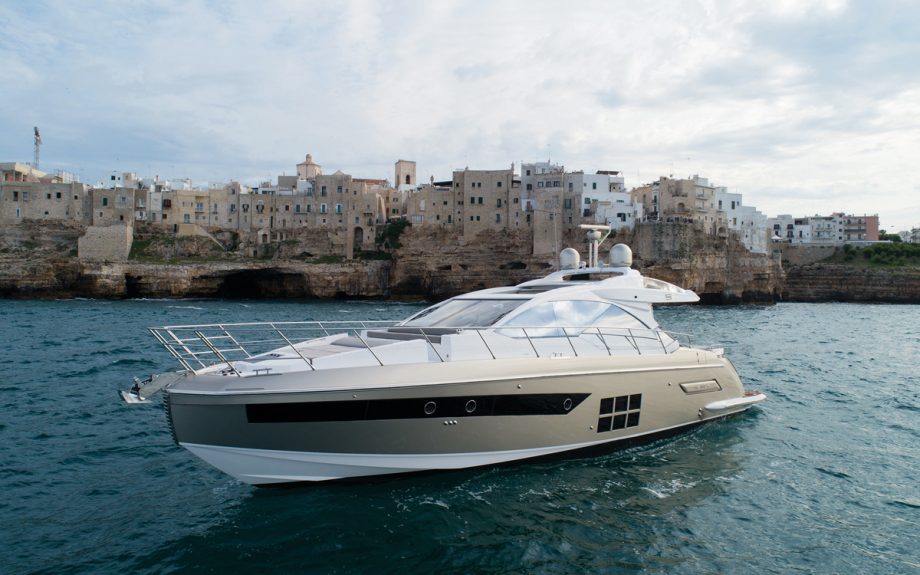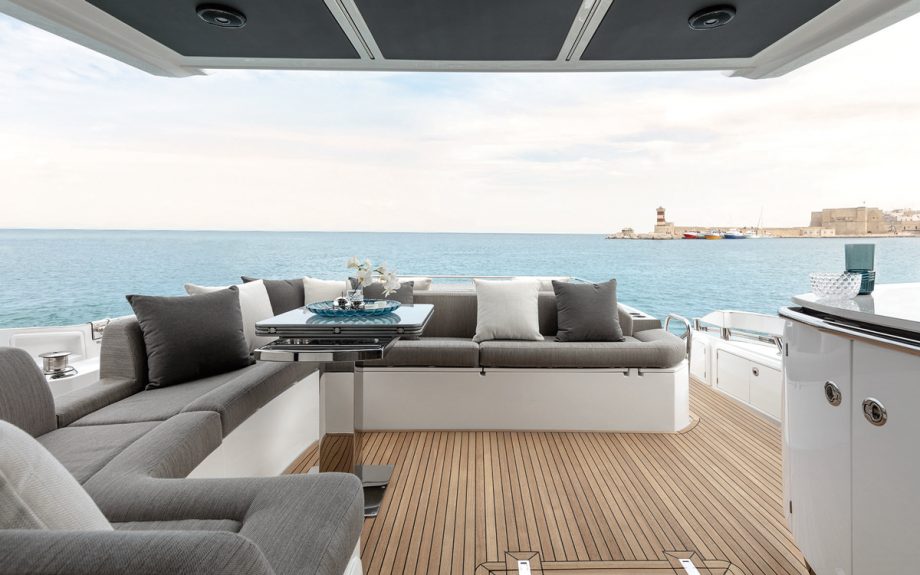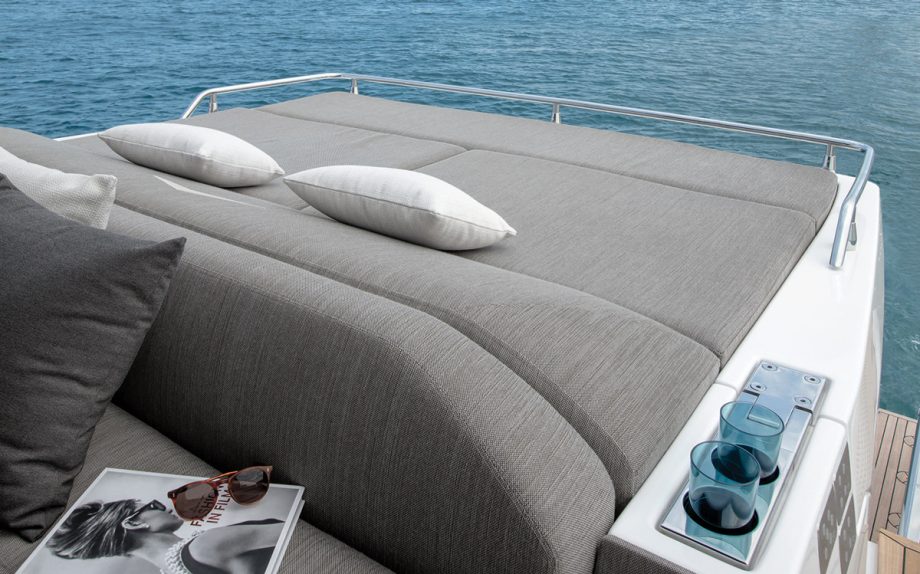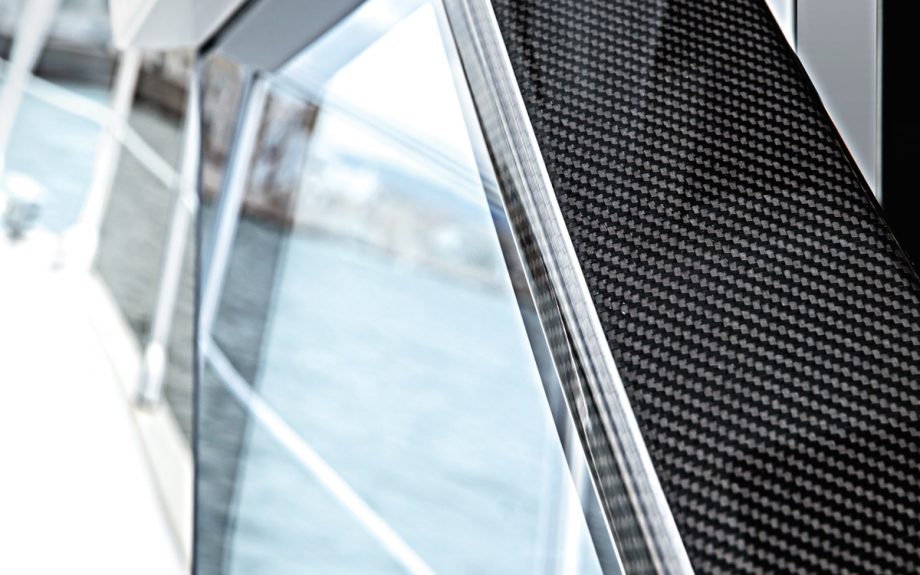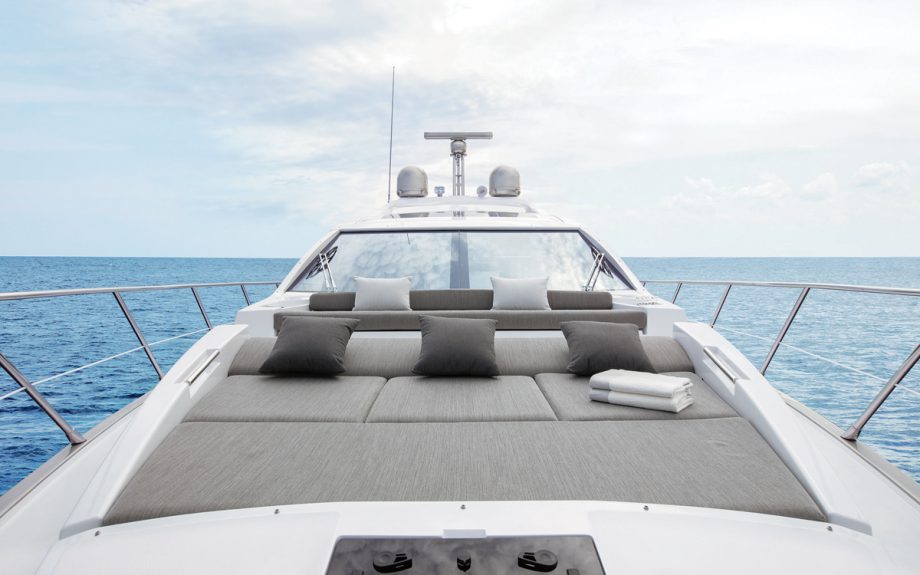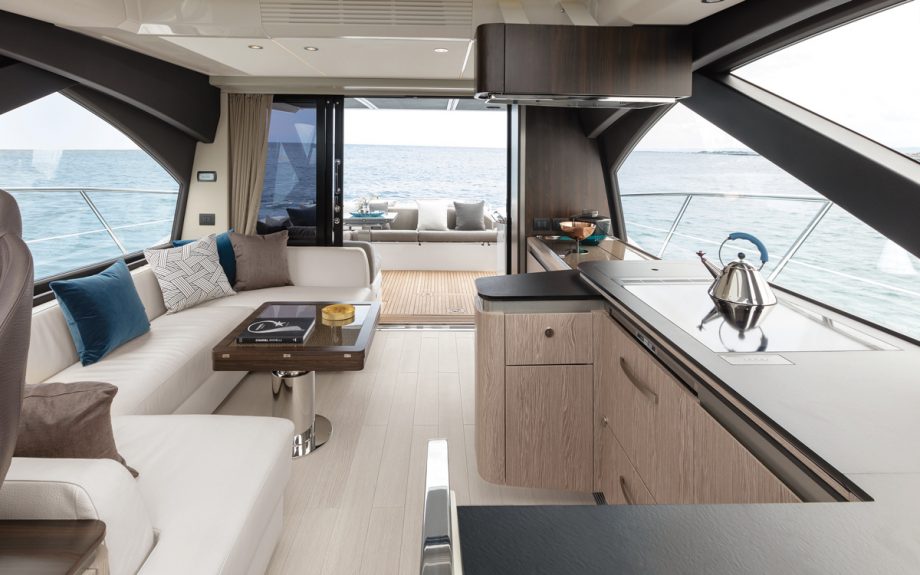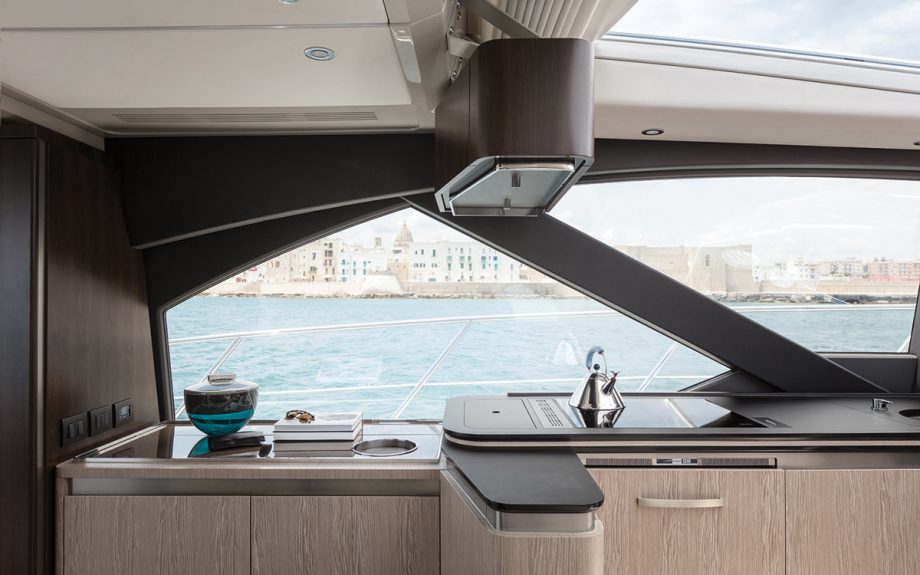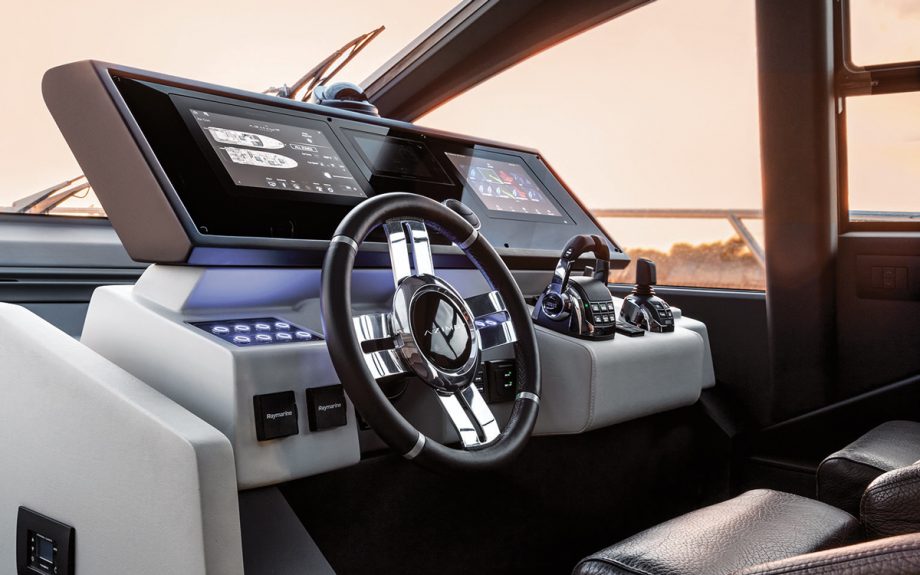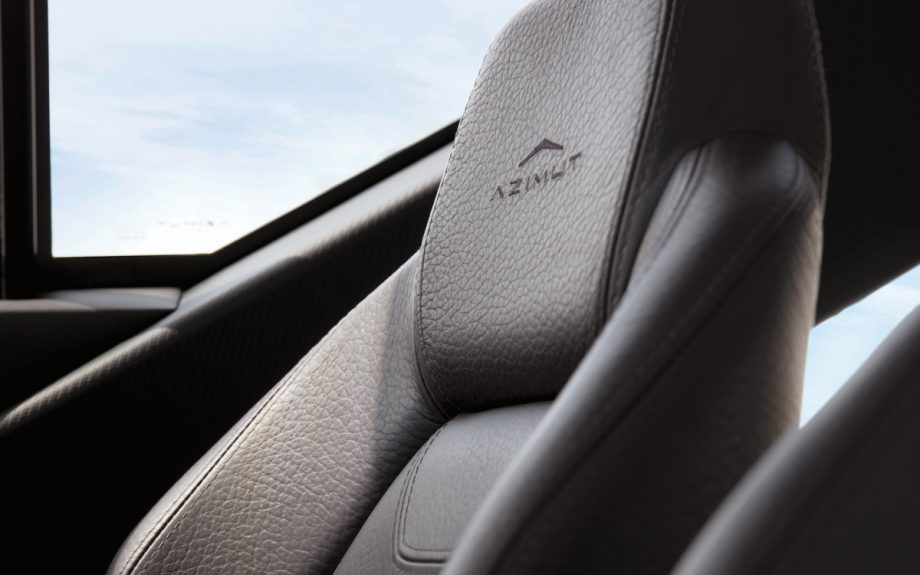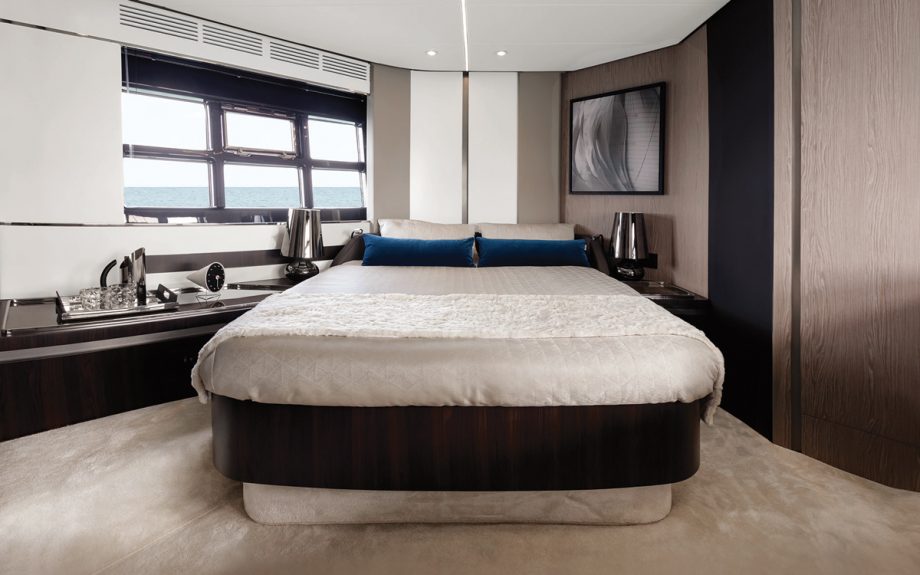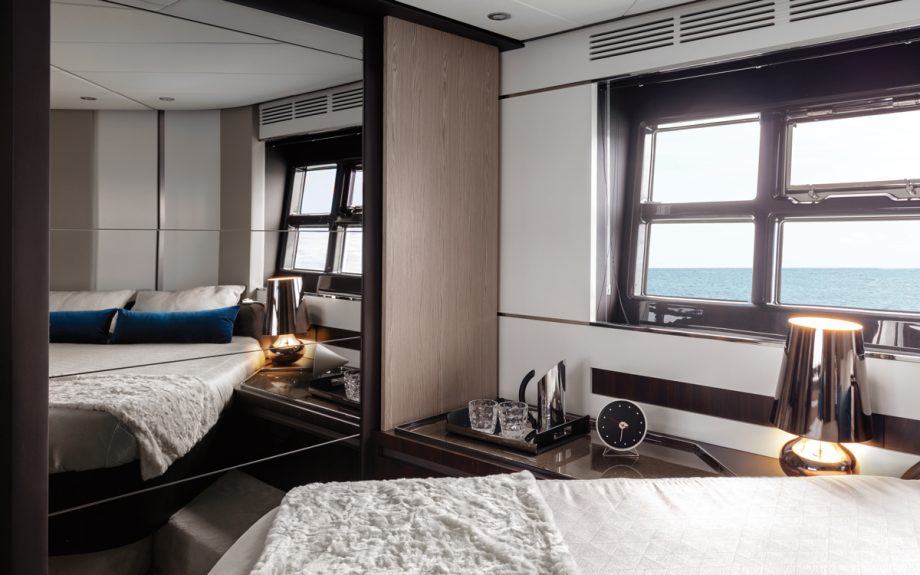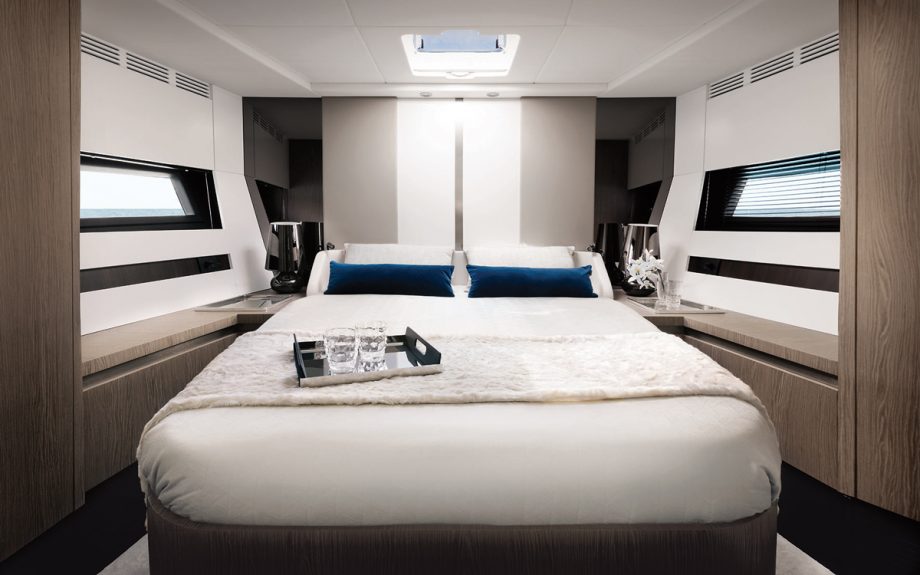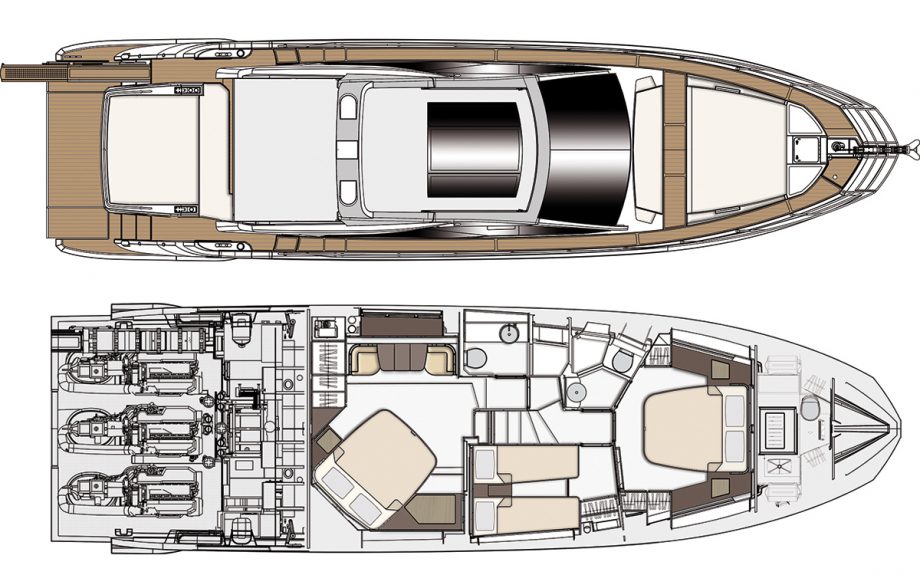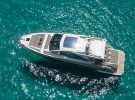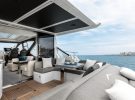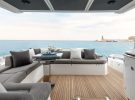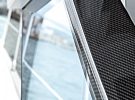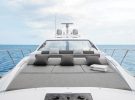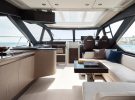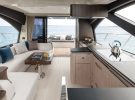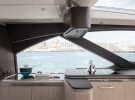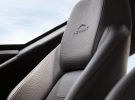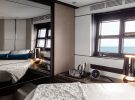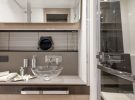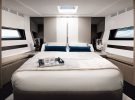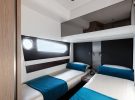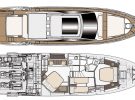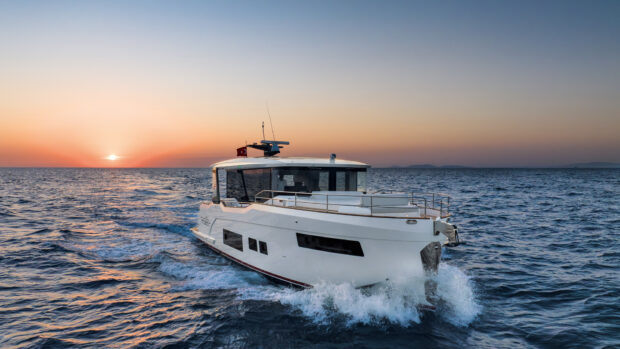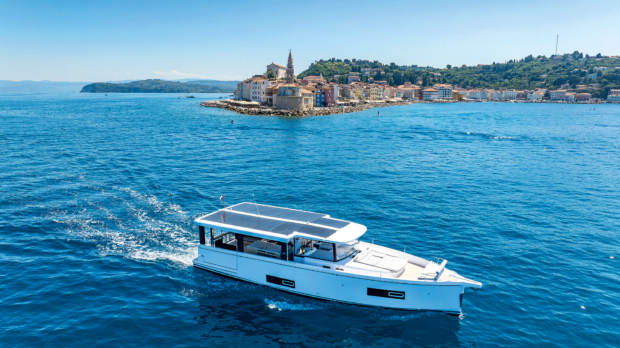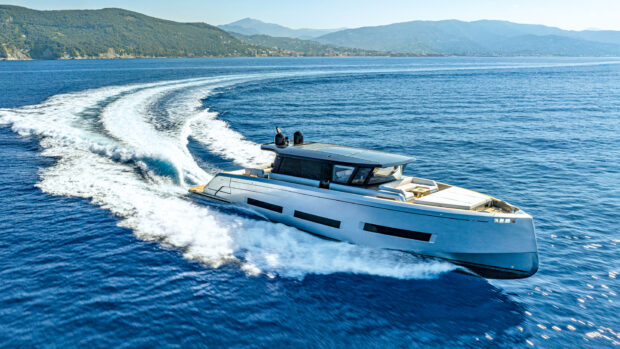Superlative handling and performance coupled with generous lower-deck accommodation – the new S6 compels Alan Harper to ask, has Azimut rewritten the rulebook again?
It is nearly eight years since Azimut came out with the first of these triple-engined beasts, the 55S in 2012, but I can still remember my amazement when I raised the hatch and caught sight of those three IPS600s lined up across the engineroom.
The first point to ponder was how they managed to fit them all in. There barely seemed to be a cigarette paper’s width between them and virtually zero clearance overhead. The next question was why. It seemed impossible that three small diesel engines and their pod drives could not only be lighter but also more fuel efficient than two big ones producing the same power. But so it was.
With the new S6, a stretched development of its original S model, Azimut has revisited the triple-engine concept but somehow managed to install the next size up, in a hull only 2in wider. If that seems a bold decision, it is one that Volvo probably helped to make: IPS600s are no longer available.

S6 is one of the best looking 60ft sportscruisers on the market
The three IPS700s, displacing 7.7 litres apiece compared with the IPS600s’ 5.5 litres, look like they must have been assembled in situ. There’s hardly any air down there, let alone room to move around. The centre unit nestles in the vee of the hull with just a couple of inches between it and the tender well.
To compare these 550hp motors with an equivalent pair of 800hp IPS1050s is to discover that in terms of weight and efficiency, the case for the three versus two is no longer quite so compelling as it was with the 55S. They are still superior in power-to-weight, though not by much. And they’re slightly thirstier. But such engineering considerations were never the whole story.
Which is, of course, that shorter engines need a shorter engineroom. And that means more space in the hull for cabins and bathrooms.
Article continues below…

Azimut 55 review – curvy interior gives this Italian flybridge a cutting edge
The Azimut 55 has an interior to die for but is that enough to topple such a talented crop of
£1100000

Sunseeker Predator 60 EVO review: Better than a £1m best seller?
Space race
The S6’s lower deck layout is almost identical to that of the 55S. The engineroom bulkhead hasn’t moved, and the two feet (60cm) of extra hull length is all aft, to accommodate the bigger engines. So just like in the earlier model, the L-shaped master suite amidships really has room to breathe, with a generous expanse of floor area, a diagonal double bed, a substantial sideboard – or two-seat breakfast dinette, if you prefer – and a shower and heads compartment along the port side.
Headroom is 6ft 3in (1.90m), which is slightly lower than anywhere else on board, but the bed is a full 6ft 4in by 5ft 4in (1.93m x 1.62m), and there are two excellent hanging lockers in addition to the three useful lockers in the sideboard. It is a cabin designed to impress, but it’s also practical and light: those rectangular window clusters have been an Azimut styling signature for some time now, but to me they still look great, inside and out.
Doors lead off the central lobby to the day head on the port side and to the twin-berth guest cabin to starboard, with its lofty headroom, especially down the middle, and two 6ft 5in (1.98m) berths. Its hanging locker is full-length, but this is the one cabin that could probably do with a couple of extra drawers or shelves.

Decor is classy but nicely understated
The third door leads forward to the VIP, where the benefits of that unusual engine installation are most keenly felt. It is set significantly further aft than usual for motor yachts of this length, so it benefits from a lot more hull width. It not only has a surprising amount of floor area, but the bed, 6ft 3in by 5ft 0in (1.90m x 1.52m) is also mounted at a sensible height.
There are two useful hanging lockers with shelves, the heads is adequately roomy, and it really is a suite in which you could install your actual VIPs with a clear conscience. They would feel pretty spoilt. And there is still room up in the forepeak for a fender locker – sorry, crew cabin – accessed through the foredeck hatch.
This impression of space on the lower deck is accentuated by the sizeable hull windows and the pale understated interior décor – by Francesco Guida, of Arcadia Yachts fame – which contrasts differing tones and textures of oak panelling and sets them off with glossy veneers and stainless steel highlights. These include practical but useful details like fiddle rails around the worktops.

Galley-up layout is very unintrusive
Deck games
The lower-deck spaces also benefit from the decision to keep the galley upstairs, where it lies along the port side in a nicely proportioned saloon, which has plenty of seating to starboard. Big windows, glazed sunroof panels and an almost 360-degree view make this an outstandingly attractive relaxation area.
Up on the foredeck there is a sociable bench seat facing forward and a big sunbed, with a sensible walking route between them. A sunshade can be rigged on four carbon poles. Back in the cockpit, the asymmetrical seating layout lines up with that of the saloon, making it easy to get around the main deck. Access to the starboard side deck is eased by a neat cutout in the sofa backrest, and there is a useful stowage area under the aft sunbed.
It is perhaps inevitable that the area on board the S6 that benefits least from the short engineroom is the engineroom itself. It is accessed via the hatch in the cockpit sole and is absolutely packed with machinery and ancillary equipment, while the well of the tender garage barely clears the middle motor. Access to pretty much anything is difficult. Servicing will be a challenge, and anything major will require a good deal of dismantling.
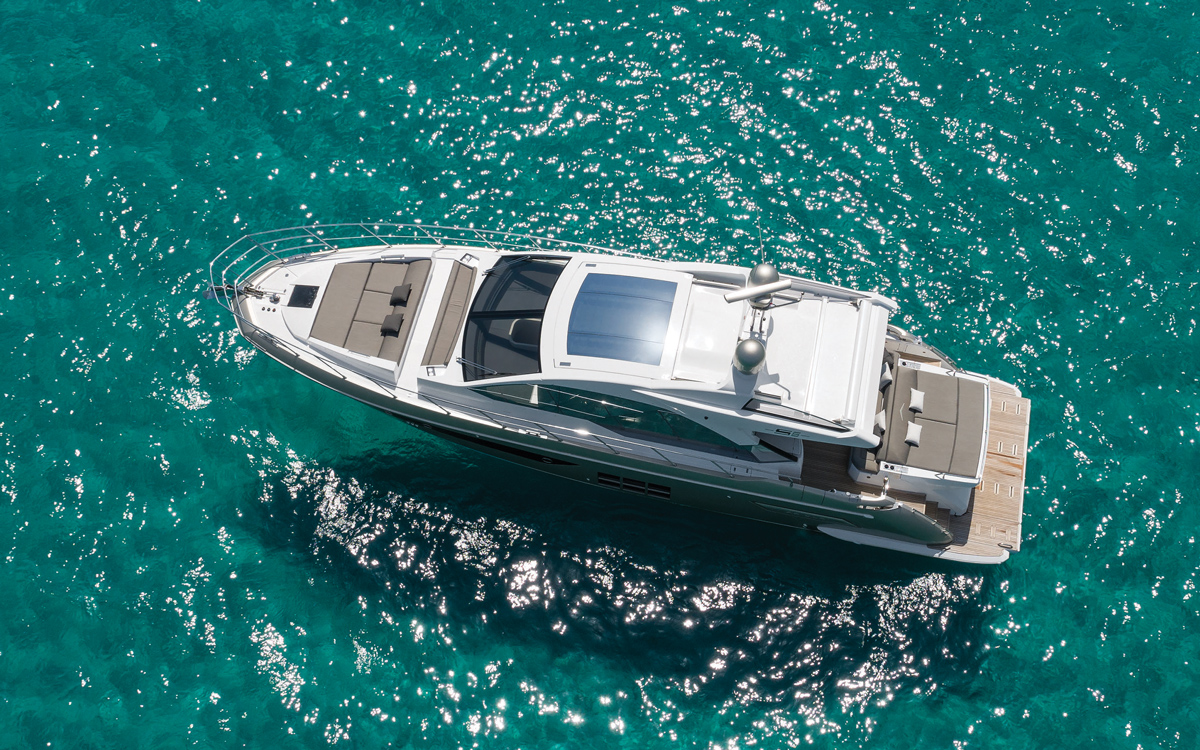
However, there is no denying that those engines do a great job. The hull of the S6 is the same as the 55S from the bow to amidships, where the deadrise is 21.2 degrees. From there to the transom, the central tunnel, chines and aft sections have been optimised to deal with the extra weight and different load distribution of the new boat, with its larger engines and heavier hydraulics systems. Deadrise aft is 15.5 degrees.
Since the 55S came out, Azimut has gained a lot of experience and confidence in the use of carbon-fibre. So while the S6’s hull is a conventional glassfibre laminate using vinylester resin, the entire deckhouse, stern, transom and main deck aft of midships are now built entirely of carbon.
This is as much about keeping the centre of gravity down as it is about reducing weight. For the new Sportfly version of the S6, launched at the recent Düsseldorf Boat Show, this is an especially relevant consideration.
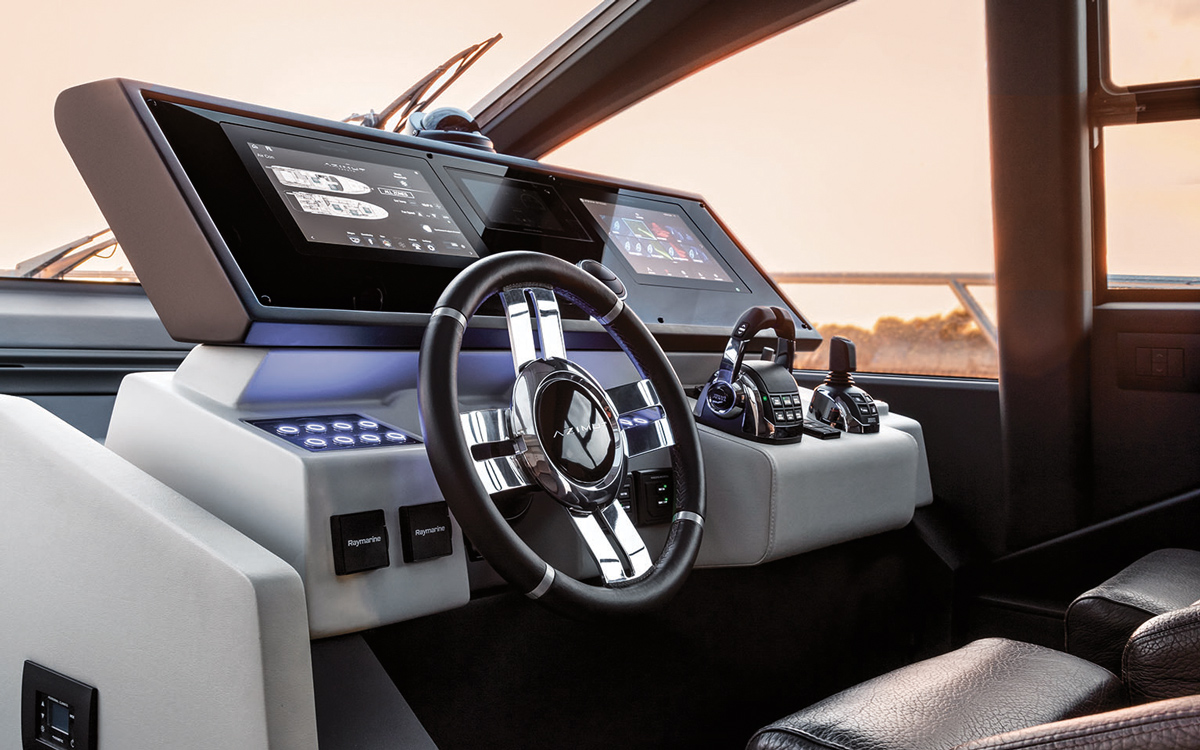
Acres of glass ensures excellent visibility from the helm
Driving force
Being a significantly larger vessel, the S6 is 2.1 tonnes heavier than the 55S but the engines and drives account for 1,470kg of that. The original model turned in a top speed of 34.4 knots during my sea trial in calm conditions on the Côte d’Azur.
Similarly laden with gear and crew but with about 80 gallons more fuel on board, the S6 managed a little better than that in the balmy waters off Cannes, recording a two-way average of 35.5 knots. At wide open throttle the S6 was burning some 90 litres per hour more than the 55S, and about 40 litres more at 20 knots – but it has much larger fuel tanks, so its cruising range is significantly greater.
Volvo’s EVC system is included in the base price of the S6, with its joystick control and automatic trim. I found it hard to imagine doing without it. All three engines can be controlled on the one throttle lever, and while using the helm in the conventional way is terrific fun with such a sweet-handling boat – the angle of heel in hard turns had us looking out through the sunroof to see where we were going – once mastered, the joystick system quickly becomes intuitive.

Impressive array of seating and sunpads on the foredeck as well as a walk-through passage
Even for short trips you’ll find yourself engaging the autopilot, which allows you to dodge waves with just a tap to the left or right, and make easy course corrections (twist and let go for one degree; twist and hold for ten degrees) while you sit back and keep watch.
The hull’s fine forefoot and that pretty useful midships deadrise made short work of slicing through what wakes we could find. Easing back to the low or mid-20s, the S6 is a fairly economical cruising machine, and seemed pretty quiet too, as it settled into the comfortable rhythm of a boat that would be quite happy to do this all day.
If you’re going to build a boat as radical-looking and as mechanically complex as the S6, it had better deliver. With three engines, pod drives and sharp styling it certainly has personality to burn, and out on the water that promise
is fulfilled.

Wraparound seating and a wetbar make the large aft cockpit a very sociable entertaining space
It is Volvo’s electronics technology that makes such a complicated propulsion package possible in the first place, and the fact that it works so well, allowing the averagely experienced hand on the helm to get the best out of the boat not just in terms of high-speed handling and low-speed manoeuvrability, but in fuel efficiency and ride comfort too, is a testament to the power of the partnership between the Italian shipyard and the boffins of Göteborg.
There is a lot else to like, of course. The master cabin is a standout feature, and the other lower-deck spaces are roomy and comfortable. The clever cutaway seat in the cockpit and walkway across the foredeck are reminders that boats this good only come about after a fair bit of thought. The interior design is cool, accomplished and well finished – up to Azimut’s usual standards, in other words.
Price as reviewed:
£1,485,000.00 ex. VAT
Verdict
A few years ago the 55S set out to make the impossible possible: generous lower-deck accommodation married to sparkling sportsboat performance and handling. The new S6, enlarged by necessity to accommodate the bigger IPS700 engines, surrenders none of its predecessor’s charm and capability, and proves the point all over again
Details
Starting price : €1.28million (ex. VAT)
LOA: 59ft 1in (18.00m)
Beam: 15ft 7in (4.75m)
Draft: 5ft 3in (1.61m)
Displacement (full load) : 29.5 tonnes (65,036 lbs)
Test engines : Triple 550hp Volvo Penta IPS 700
Top speed on test : 35.5 knots
Cruising speed : 25.6 knots
Fuel consumption : 224lph
Cruising range : 239 miles
Noise: 67dB(A)
Fuel capacity : 2,600 litres (572 gal)
Water capacity : 590 litres (130 gal)
RCD category : B for 12 people
Design: Righini/Guida/Azimut





